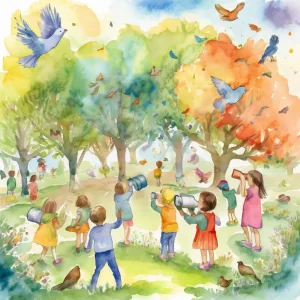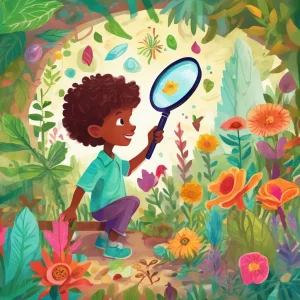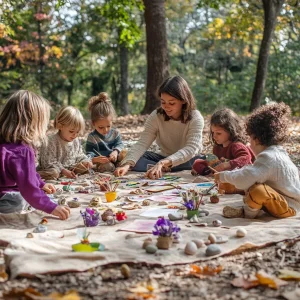Activity
Similar Activities
Nature Shapes Adventure: Bird Watch & Scavenger Hunt
Children’s Age: 4–5 years
Activity Duration: 10 minutes
An outdoor activity for children aged 4-5 years combining bird watching and shape recognition.
Activity Duration: 10 minutes
Sensory Sound Box Exploration: A Musical Adventure
Children’s Age: 1–1.5 years
Activity Duration: 5 – 20 minutes
An engaging activity involving sensory exploration of sound using a variety of household items.
Activity Duration: 5 – 20 minutes
Enchanted Melodies: The Musical Tunnel Crawl
Children’s Age: 1–1.5 years
Activity Duration: 5 minutes
An engaging tunnel crawling activity with musical instruments for children aged 13-17 months.
Activity Duration: 5 minutes
Enchanted Sound Symphony: Sensory Sound Walk
Children’s Age: 2 months – 3 years
Activity Duration: 5 – 25 minutes
Exploring sounds and textures through a sensory walk outdoors.
Activity Duration: 5 – 25 minutes
Enchanted Nature Quest: The Sensory Nature Hunt
Children’s Age: 0 month – 6 years
Activity Duration: 10 minutes
Let's go on a Sensory Nature Hunt! We will use our senses to find items like pinecones, leaves, rocks, and flowers. You can bring a basket, a list of things to find, and maybe a ma…
Activity Duration: 10 minutes
Nature Explorers: Scavenger Hunt & Art
Children’s Age: 2–6 years
Activity Duration: 10 minutes
Let's go on a Nature Scavenger Hunt and Outdoor Art adventure! We will explore nature, collect items, and create beautiful artwork. You will need a bag, paper, crayons, watercolors…
Activity Duration: 10 minutes
Empathy Through Storytelling: Musical Sensory Experience
Children’s Age: 2–3 years
Activity Duration: 5 – 15 minutes
Let's dive into Musical Sensory Storytime! Get ready for a fun experience that will engage all your senses. We will read a story, play musical instruments, create art, and enjoy co…
Activity Duration: 5 – 15 minutes
Rainbow Rice Sensory Play Adventure
Children’s Age: 1.5–2 years
Activity Duration: 10 minutes
Engage toddlers aged 18 to 24 months in a sensory play activity using colored rice to enhance physical, social-emotional, and sensory development. Gather materials like uncooked wh…
Activity Duration: 10 minutes
Whispers of the Forest: Sensory Nature Walk
Children’s Age: 0 – 6 months
Activity Duration: 5 – 10 minutes
The Sensory Nature Walk activity is tailored for infants aged 0 to 6 months, offering a safe and engaging outdoor experience. Bring essentials like a baby carrier, sunscreen, and a…
Activity Duration: 5 – 10 minutes
Sensory Nature Walk: A Baby's Adventure Outdoors
Children’s Age: 0 – 6 months
Activity Duration: 10 minutes
Engage infants aged 0 to 6 months in sensory exploration with the Sensory Nature Walk activity. Gather essentials like a baby carrier, sunscreen, and soft toys for a safe outdoor e…
Activity Duration: 10 minutes
Enchanted Peek-a-Boo Sensory Fun Journey
Children’s Age: 6 months – 1 year
Activity Duration: 10 minutes
"Peek-a-Boo Sensory Fun" is a delightful activity that supports social-emotional development and sensory exploration in children. Using a soft scarf and favorite toy, caregivers ca…
Activity Duration: 10 minutes
Wonderful Beginnings: The Sensory Nature Walk
Children’s Age: 0 – 3 months
Activity Duration: 5 – 10 minutes
Experience a calming and stimulating Sensory Nature Walk designed for infants aged 0 to 3 months. Prepare with a soft carrier, cozy blanket, sunscreen, and a nature sounds playlist…
Activity Duration: 5 – 10 minutes


























